David breaks out the digital calipers to test the effectiveness of the Fasst Flexx suspension handlebar.
There’s something undeniably nineties-sounding about suspension handlebars, especially given that these work with elastomers. Manufacturer Fasst have tested the concept with ATVs and motocross bikes since at least 2011 and have now launched mountain bike bars.

I sometimes wonder how more esoteric bike bits might work for riders with injuries, and didn’t think I’d get to test that out myself with these, but for several reasons I’ve been fighting some persistent injuries this past month. One reason was a chin-up grip stressing muscles near my elbows. The second was a crash in which I sprained a wrist. Any further contributing factors, I’ll leave as an exercise for the reader.
Fasst Flexx Suspension Handlebar | Initial impressions

So what is the Fasst Flexx Suspension Handlebar? It’s an 800mm mountain bike handlebar designed to reduce high frequency trail buzz. It features a pair of pivots near the stem that allow the bars to move (near) vertically up and down. Not in an uncontrolled manner, that would be silly. No, they allow the handlebar to move within a set range, with the amount of movement affected by suspension elastomers. These allow a downward movement of barely a couple of millimetres, with the hardest elastomers in place, to perhaps a couple of centimetres with the softest in place. Upward motion is minimal, but it is also governed by a coloured elastomer.
Starting in the middle, a 31.8mm alloy centre section holds these hinges and elastomers, leading outward to two regular handlebar-sized 22.2mm carbon ends. The styling is subtle enough people don’t immediately notice or comment. Being untapered, the carbon sections offer plenty of space for things like bells and light mounts.
The bars work via four elastomer inserts, two per side, which change the feel of both pushing down (compression) and pulling up on the bars (rebound). They secure by means of barrel bolts, the bolt going in the top through the main elastomer, the barrel holding the washer-like rebound elastomer underneath.
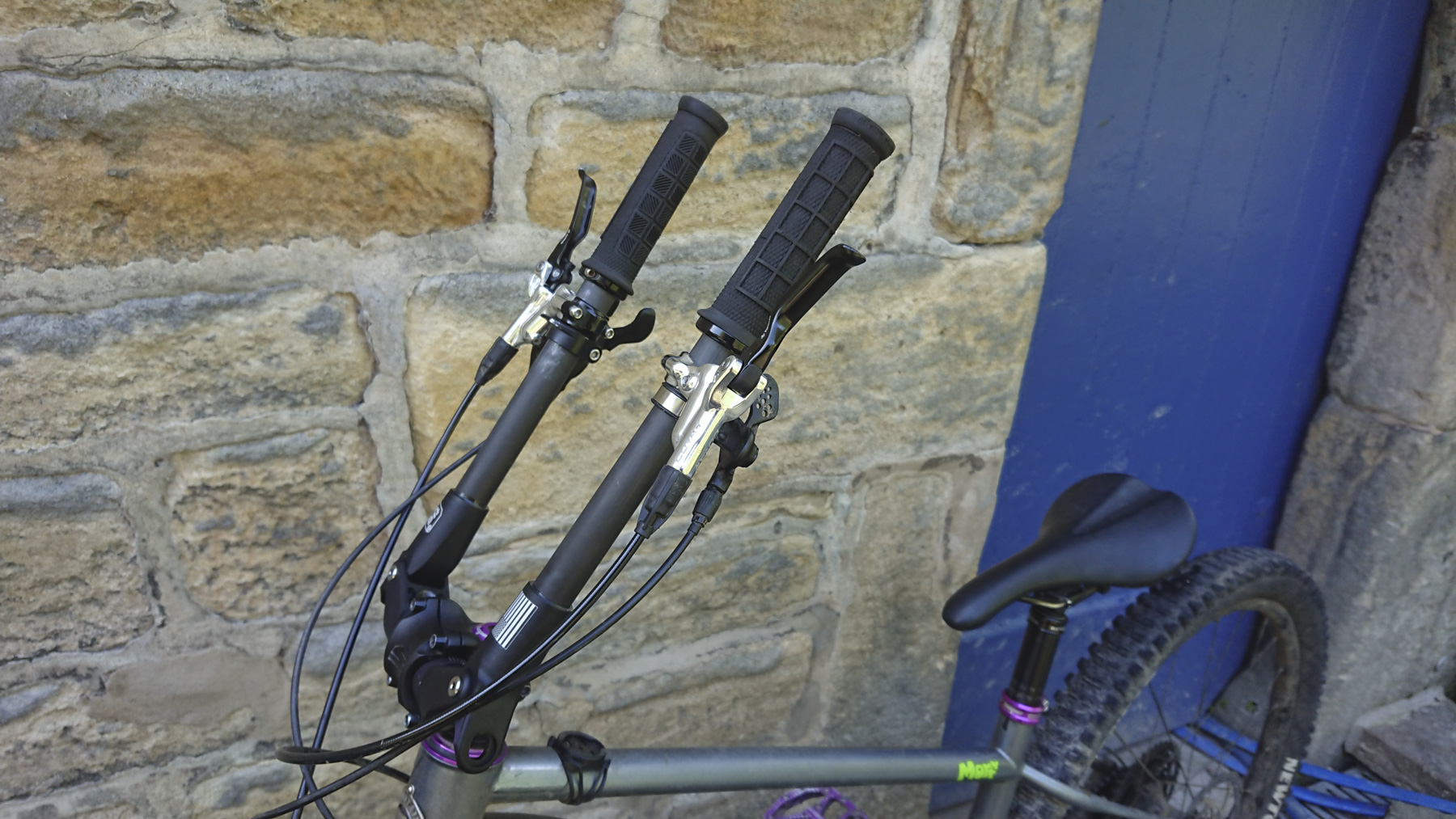
The two compression elastomers are the largest. Once the barrel bolts are undone and removed, each side of the handlebars hinges upward, kind of like a break-action firearm. Changing inserts is quite straightforward, though can require some downward pressure to get the barrel aligned.
At Singletrack we don’t usually go to town on the price of things, but niche stuff tends to also have much higher prices, making that more of a consideration. There’s no getting round the £450 price tag on these, but Cyclorise do currently offer 30 day money back guarantee. It’s also worth noting there’s a forthcoming alloy version that will be a little cheaper. These are somewhat heavy at a 480g verified weight but the 150-200g difference over a standard set of alloy bars is hardly going to tip your whole bike over into feeling heavy.
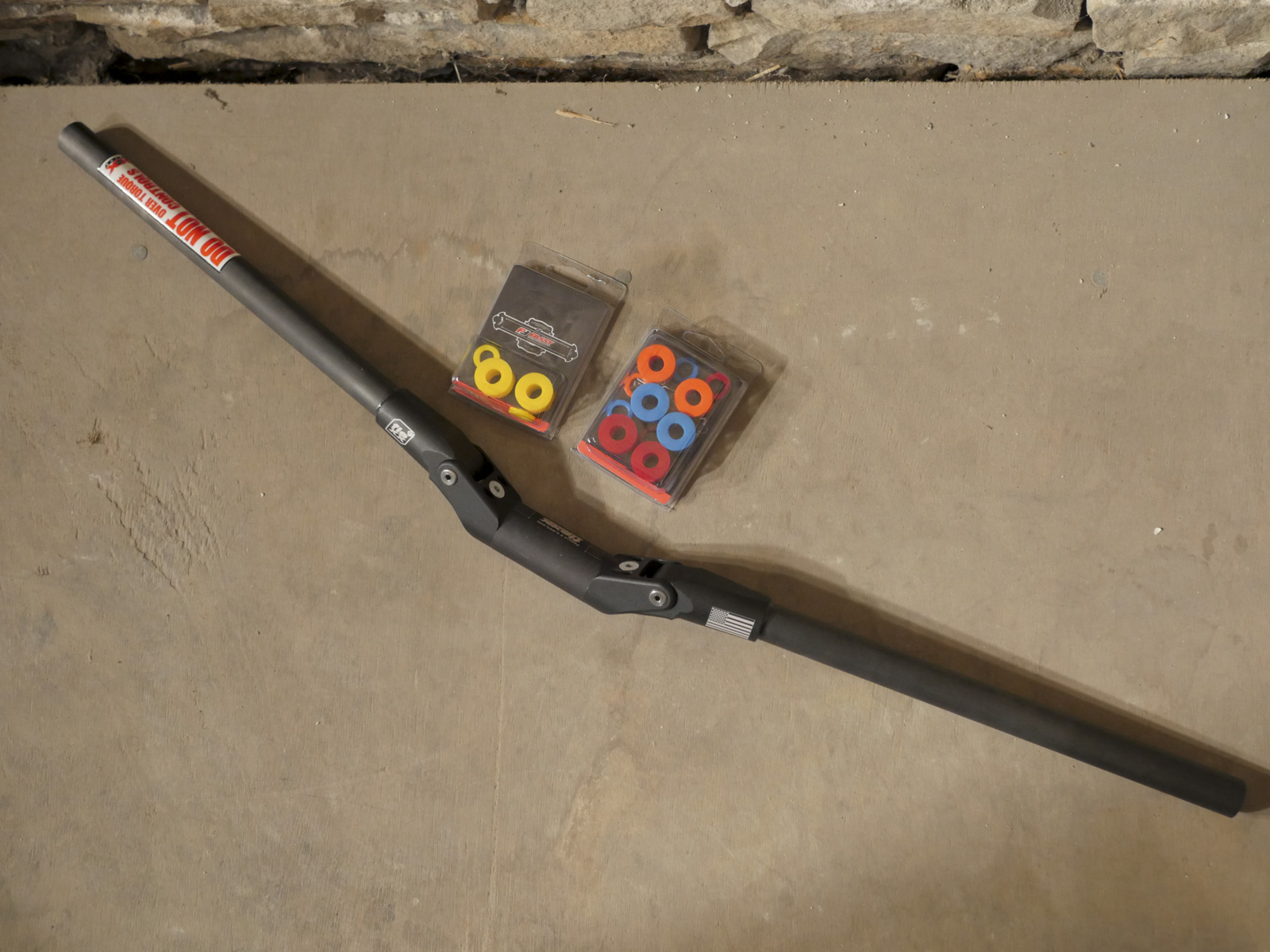
They sent five sets of inserts with these bars, and at least one, possibly two, are experimental. Bear that in mind while reading about them, and refer to Cyclorise and Fasst for current information if buying any yourself.
There was some confusion about which inserts were softest, with the blue ones supposed to be the super softest ones. Doing my own tests with a plank, 20kg of weights and a digital caliper though, I found they’re firmer than the reds. In order of softest to firmest, they were: red, experimental yellow, blue, old yellow (default inserts at time of writing), orange.
My test was to measure the hole in the centre of each elastomer under no load, then, making sure to orient them the same way, load them up under the end of the plank with 5, 10 15 and 20Kg of weight, measuring the hole at each step. Here are the results:

Note that my test squashed across the diameter of the hole, whereas their compression in use is along the hole axis. The bolts might also pre-load them. As you can see, under 20Kg of weight the reds offered almost no resistance, whereas under the same loads orange only deflected around a fifth of a millimetre.
Fasst Flexx Suspension Handlebar | The Ride
I left fork settings and tyre pressures unchanged for this whole test. The Formula 35 fork can be set to a completely rigid lockout, perfect for testing vibration damping.
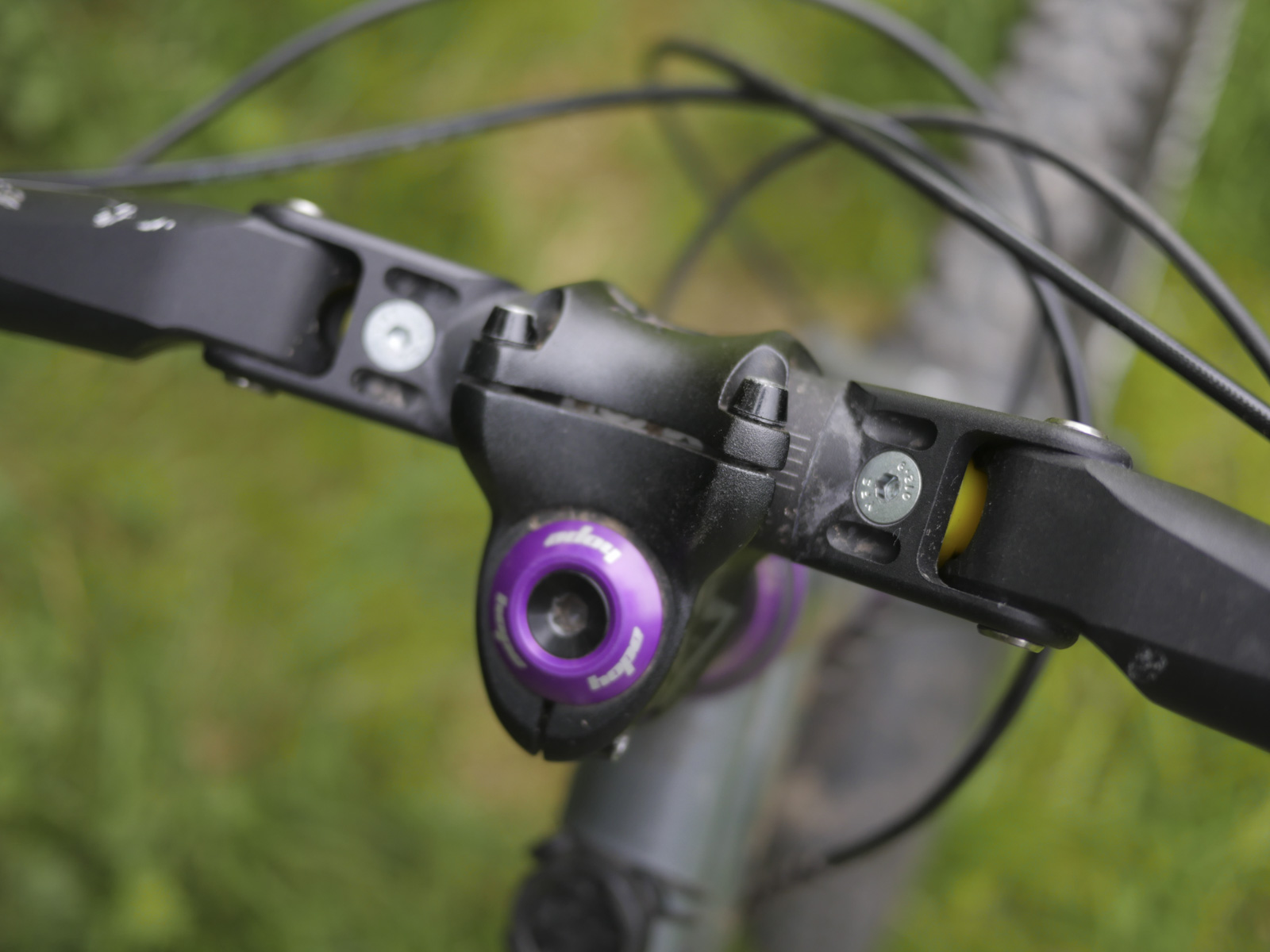
For the first ride, I used the default yellow inserts. Bouncing a bit, they didn’t feel much different to a flexy carbon bar. That stayed the case throughout the ride, and to test vibration I also kept using the lockout for slower, flatter sections. The bars were clearly doing a lot to reduce vibration. Stopping for a break, I forgot the lockout was on, and didn’t realise for a hundred metres or so. That vibration damping will definitely reduce fatigue on long days.
On switching to the red (softest) inserts, I rode about five metres before stopping and swapping them out. They were waaaay too soft for me, sagging noticeably through most of their travel under any kind of weight. Maybe they’re for very light riders.
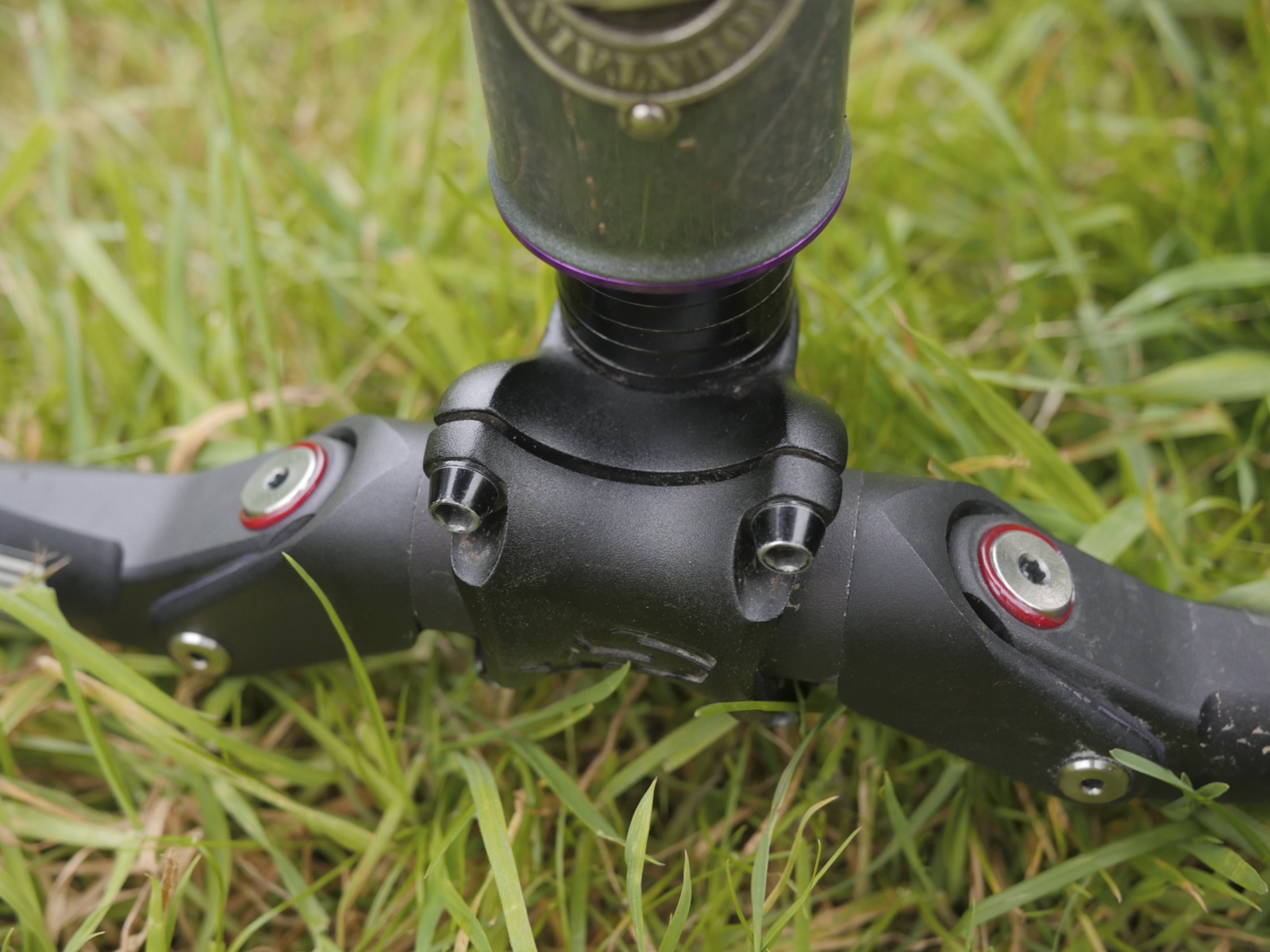
Experimental yellow had a little slip of paper explaining they might be used in place of the red inserts. I found them rideable but still a little too soft, which manifested as a split second of vagueness when pushing into corners. As a rule I like quite flexy handlebars, but the softer end of the Flexx range really let me know what too soft can be like. If, as I load them, the ends of my handlebars flex too much, it feels like a split second disconnection from the trail. The bike feel goes muddy and vague.
So, onward to the blue inserts. These are a bit firmer than experimental yellow, but had similar, briefer moments of vagueness for my weight and riding. Hard braking also had some quirks running any too-soft elastomers, in allowing the bars to flex forward and down slightly. Fasst say “Precise in the steer path, forgiving in the load path” which is true, but the load path for braking sits somewhere between them (if you could alter physics to set the braking load path 90 degrees from the head angle, that would get… interesting).
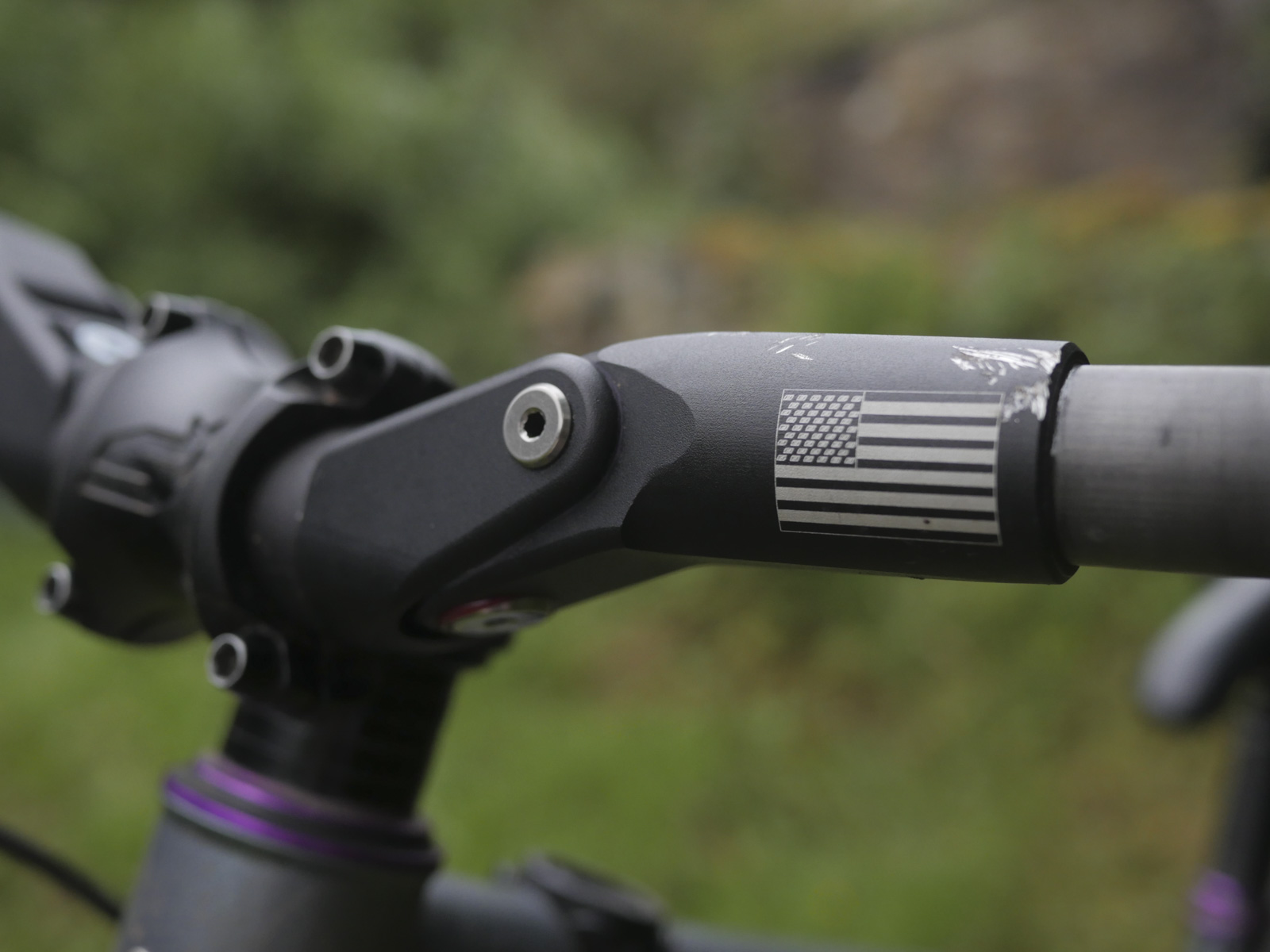
None of these things were any issue at all with the old yellow inserts, but before going back to them, I tried out the ultra-firm orange ones, aimed at racers and very aggressive riders. They instantly felt harsh, making these bars stiffer than any I’ve run in the past six years. No forgetting the lockout’s on with these.
I could especially feel this in my injured wrist, while the other inserts all worked wonders to insulate it and reduce pain. Because of that, I can see the Flexx handlebars might work well with any kind of shoulder, arm, or hand injuries.
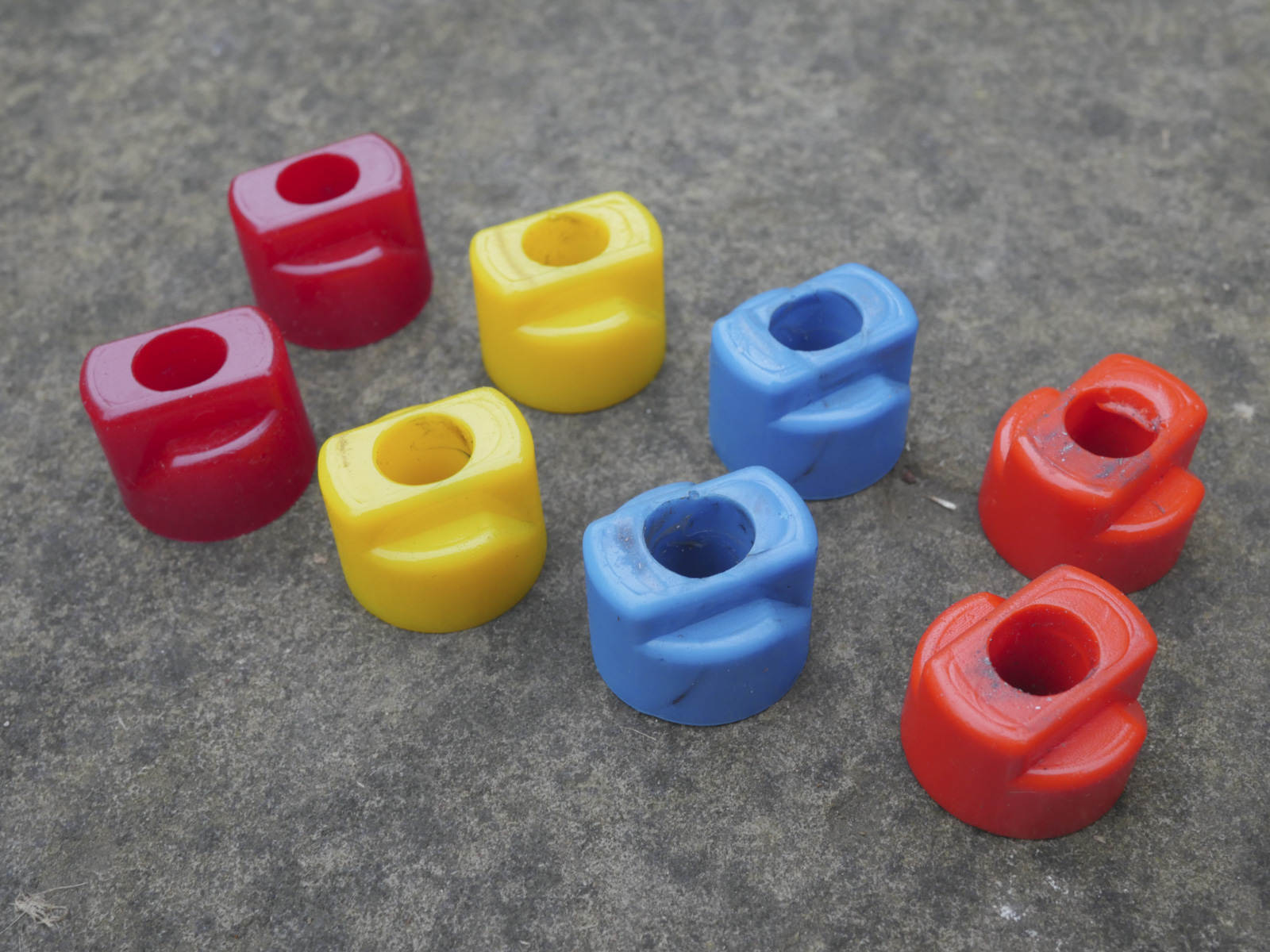
For comparison, bars I’ve ridden a lot on my own bikes over the past half decade are Spank Spoon 762mm, Spank Vibrocore 800mm, Sixpack Millennium Carbon 765mm, and ProTaper Carbon 800mm. They’re all about right for me, and the latter three in particular have done a lot to get rid of tingling hands and fatigue. They’re also roughly equivalent in feel to the firmer, old yellow elastomers on the Flexx bars, so I’d urge Fasst, before taking Old Yella out back and shooting it, keep something with this firmness in the lineup.
I was surprised at how easy it was to feel the difference between inserts. Normally I find things like bars and wheels can require same day, back-to-back testing, to illuminate more subtle differences. With the Fasst Flexx handlebars, it wasn’t even necessary. The differences between any two sets of inserts are so pronounced I could immediately feel the difference, even with a full night’s sleep between. That’s great for understanding what the bars are doing, but perhaps not for precise tuning.
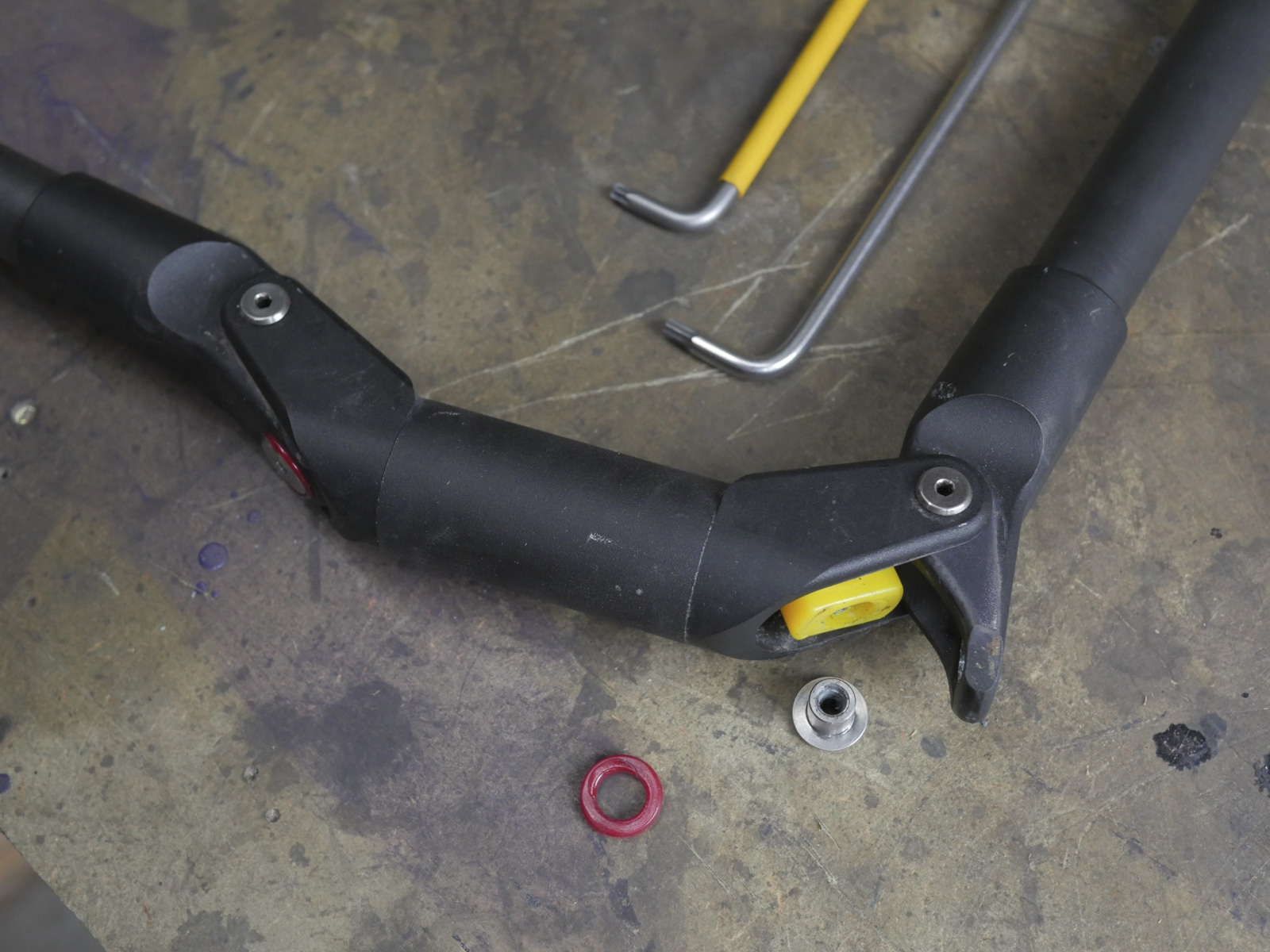
Years ago, I found that running my tyres around 17PSI tuned out buzz and made me much faster downhill. Mostly I couldn’t get away with it until tyre inserts came along to save my wheels. I suspect I’d feel much more of an effect from these bars by running higher tyre pressures, but as is, in my usual setup, the most pronounced effect they had was in making it much easier to ride with an injury. If you’re a tubeless rejector, or still run tyres at higher pressures, the weight penalty for these is similar to an insert, but sprung.
So in summary, these do work, letting you experiment with different bar stiffnesses. Finding the right one for you has some positive riding effects, also making handlebar compliance into something tunable without the faff of swapping all your controls to new bars.
Of five different sets of compression inserts, there was only one I liked though, with one too firm and three too soft. The initial yellow insert was close-enough-to-goldilocks, and I ended up running it with the ultra soft red rebound inserts.
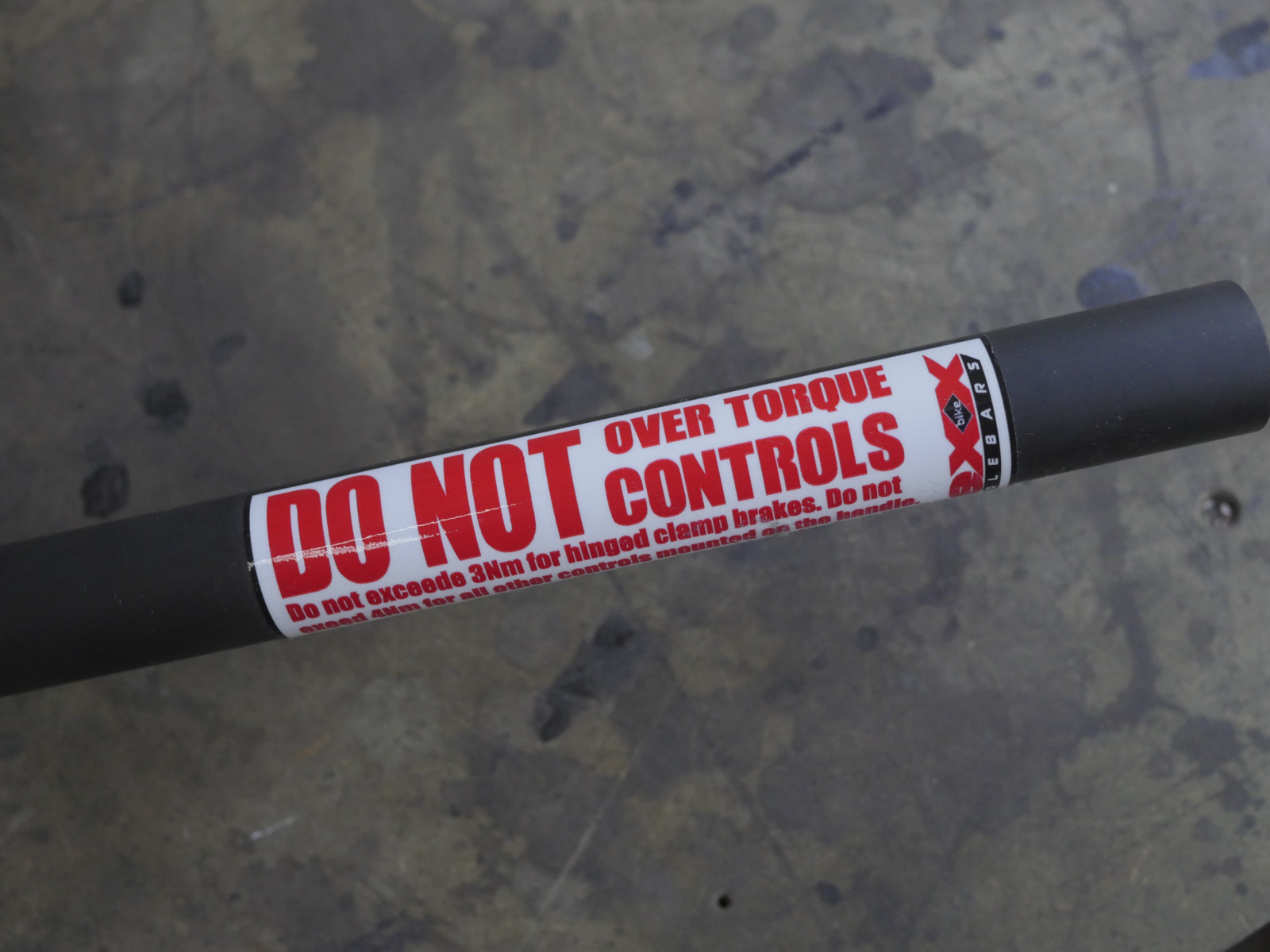
Worth noting that these might all perform differently at different extremes of temperature, and while I haven’t had a chance to take them anywhere freezing or ride in 30C heat, that could change my preferences. Likewise, cutting the bars down would reduce leverage and make softer inserts feel less flexy.
I’m not a particularly heavy guy at 80kg with kit, so sat at four of five in their firmness spectrum, I think Fasst need more steps in their range of elastomers to realise the full potential of these bars. I’d definitely like to have experimented with half steps either side of where I ended up.
Overall
So far, available tuning lacks the granularity I’d like, but with the right inserts these bars do a great job tuning out trail buzz without flexing too much. They may seem like a pure luxury item, and for most of us they probably are. For anyone having to work around a shoulder or arm injury while continuing to ride though, they might be perfect. What kind of price can you put on that?
Between lower tyre pressures, tyre casings, suspension setup, handlebars, and grips, there’s a lot of stuff you can tweak to reduce vibrations, fatigue and even pain from riding. Over the years, between numbness, tingling and injuries, I’ve worked on all of these things a lot, and perhaps that’s why I didn’t feel massive benefits from these bars.
That’s not to say there were none, or that letting a few PSI out of your tyres does exactly the same thing – it doesn’t. I wouldn’t say they have no performance benefits, it just felt like my tyres and the plush negative spring in my fork were doing more. Fast’s bars didn’t make me feel quicker or more in control, but they did make me more comfortable.
This was most apparent on switching back to standard bars with Revgrips attached. Revgrips allow rotational movement of your hands relative to the bars, whereas Fasst’s Flexx bars allow vertical movement. I was extremely pleasantly surprised by Revgrips when I ran them before, but the vertical compliance of Fasst’s bars was much kinder to my injured wrist. These bars are one of many things you can do to address comfort, vibration and control, but for that reason alone I wouldn’t discount them.
Find out more about this bar on the Cyclorise website.







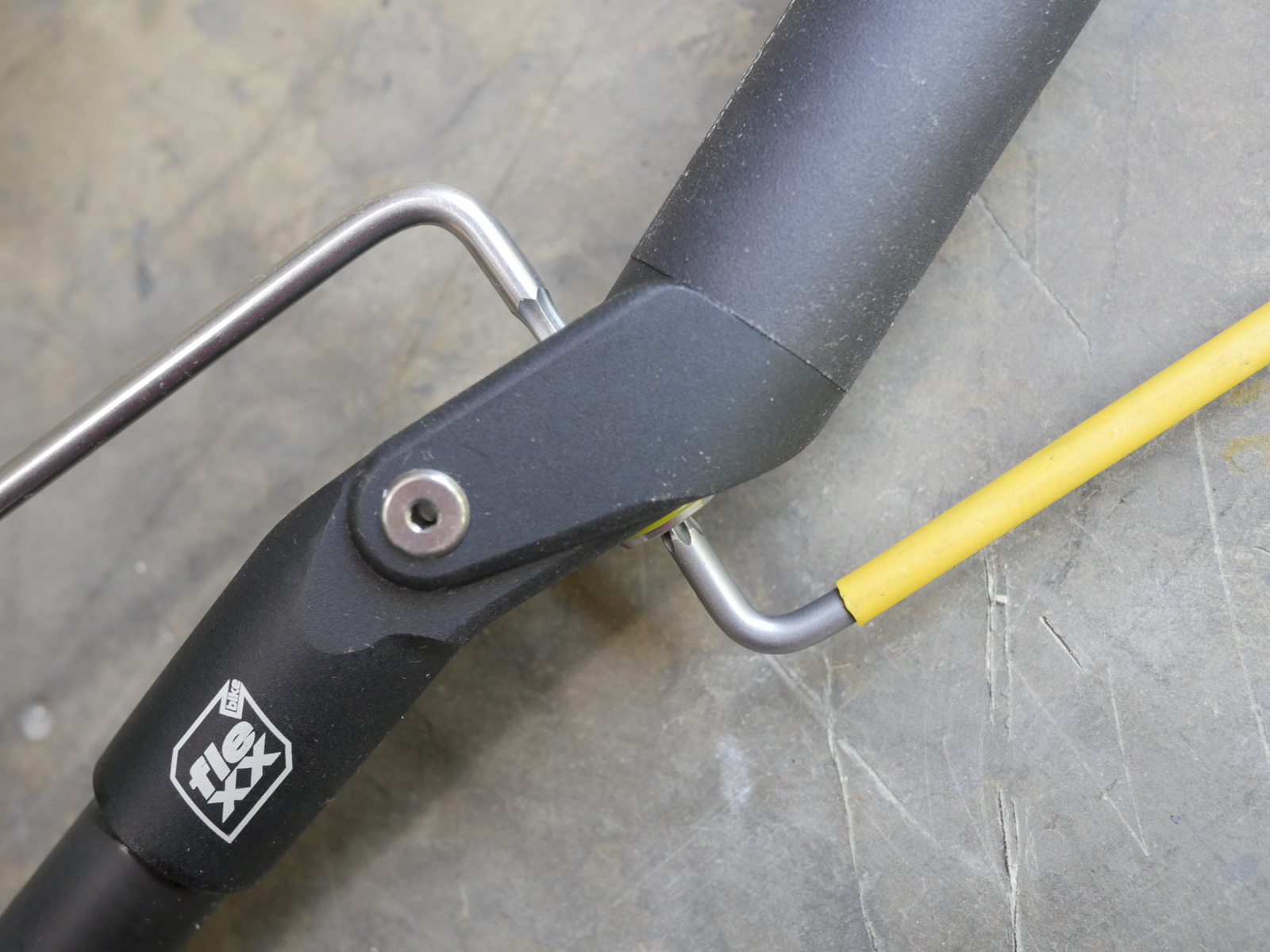
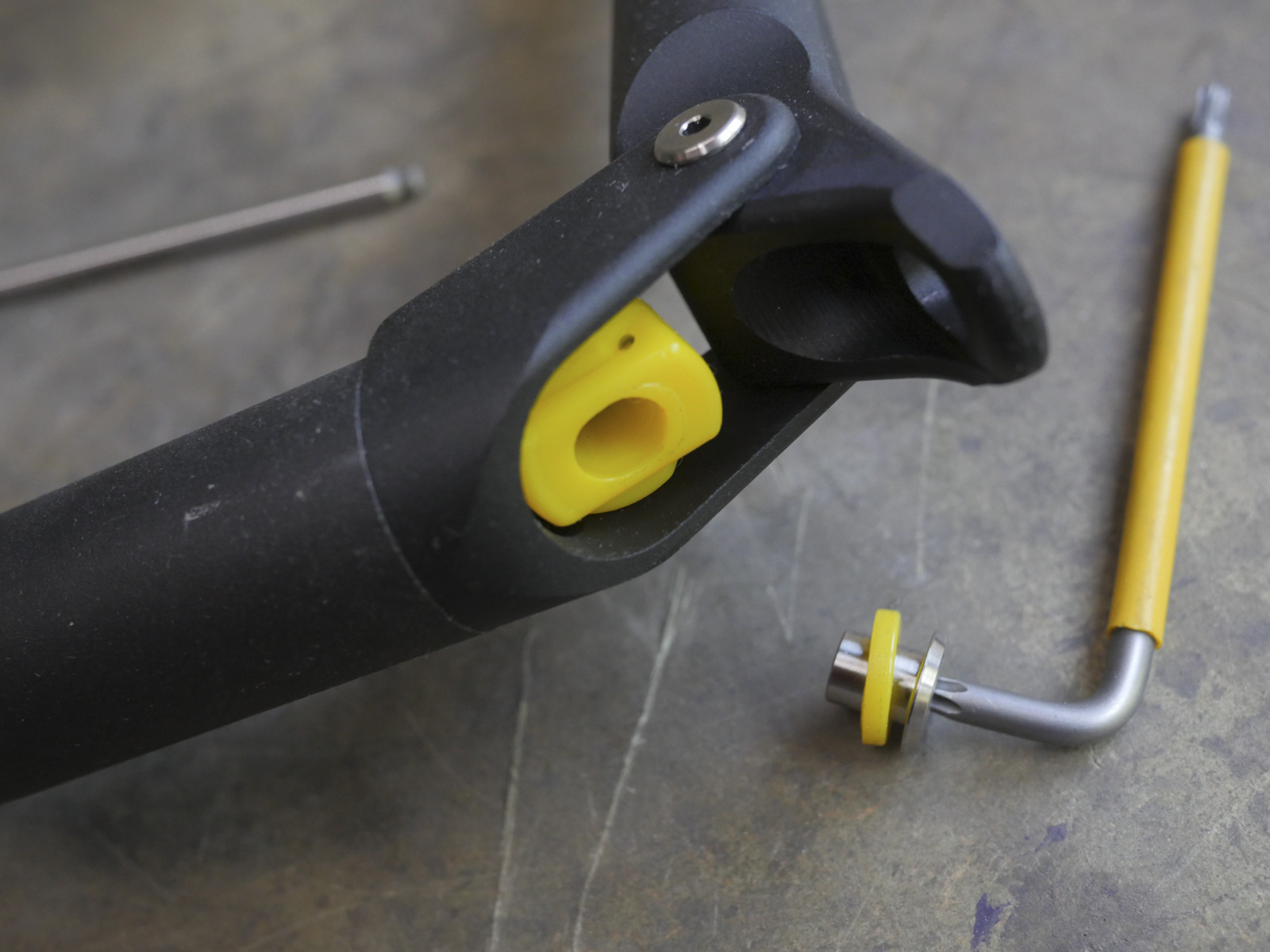



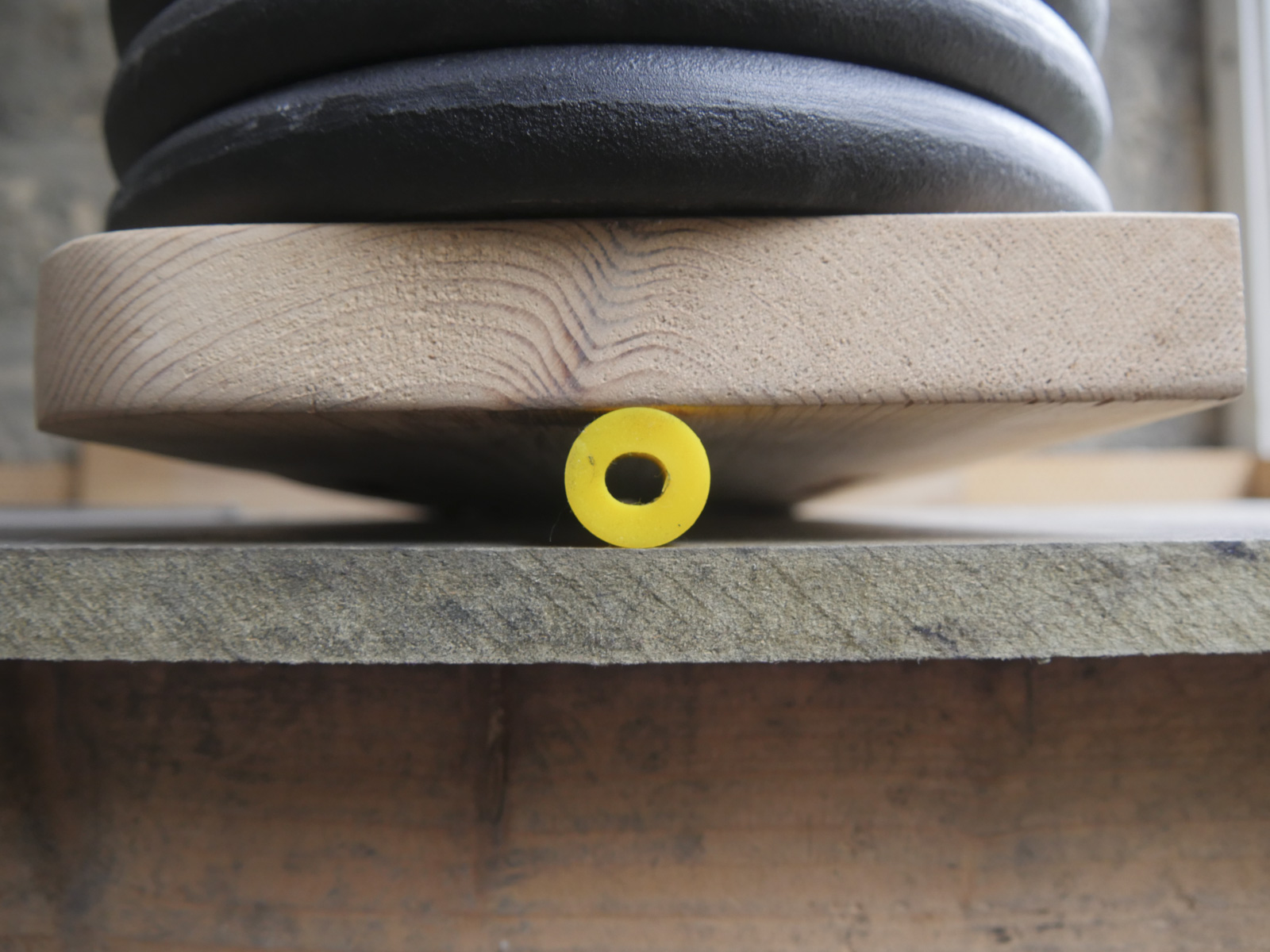

Hmmmm. Whatever next, a stem that flexes?…and £450 !!!!!
Bit too much, for that money i’d rather get my fork custom set up for me which would probably have a much better result.
£450 for what’s basically 25 year old Girvin Flexistem technology.
Price doesn’t worry me us much,I use the rev grips and they are brilliant for reducing wrist pain and numbness,will give these a go too as comfort is above everything else at my age!,rather spend some money and stay riding!
hahahahahahahahahahahaha
£450
£450 to solve a problem that the right grip/glove combo and proper fork set up fixes.
And then have lots left over for haribo and other cool stuff.
£450 a bit steep – my biggest worry here is the built-in weakness that a pivot/hinge must introduce to an area of the bike I really don’t want to see fail.